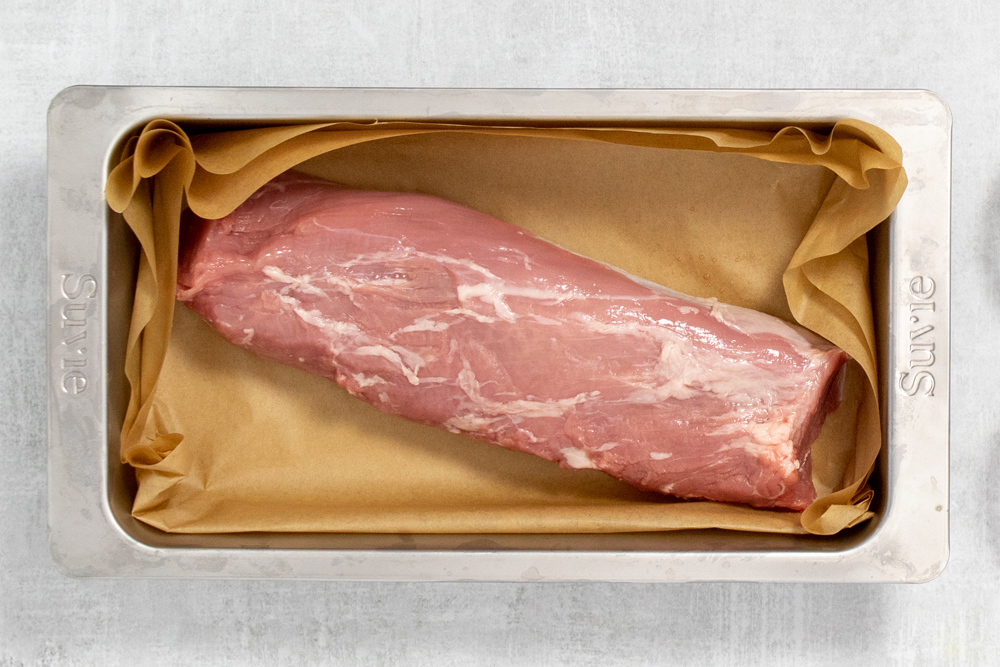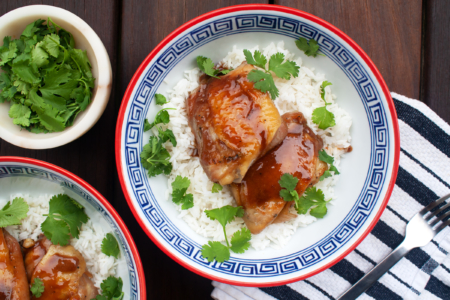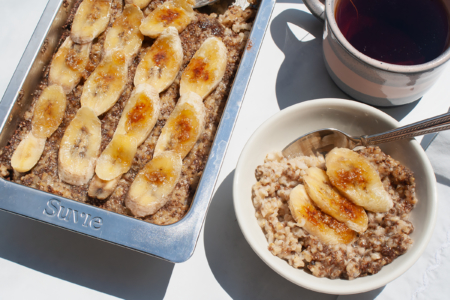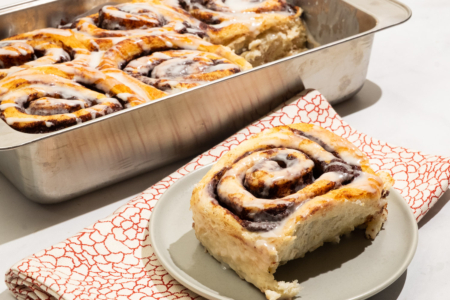Tasty, versatile, economical, and packed full of protein, pork is the perfect centerpiece of any meal. Unfortunately, pork tends to get tough and unpleasant if overcooked which makes it ideally suited to the sous vide cooking technique. Using this simple cooking method, pork chops, sausages, and even whole tenderloin can all be cooked to the perfect level of doneness while retaining all their moisture. Sous vide adds a layer of control and precision that allows you to prepare any type of pork to the exact level of doneness you prefer.
Here’s how to cook pork using sous vide.
1. Pork Chops Cooking Temperatures and Times
2. Pork Tenderloin Cooking Temperatures and Times
3. Pork Shoulder Steaks Cooking Temperatures and Times
4. Sausages Cooking Temperatures and Times
5. Ingredients and Tools
6. Preparation
7. Suvie Directions
8. Immersion Circulator Directions
9. Finishing
10. Recipes
11. FAQs
Pork Chops

Tired of eating tough and chewy pork chops? Then it’s time to cook them using sous vide. Pork chops cooked using sous vide are a revelation, a tender, moist, and tasty revelation. Suvie and sous vide removes the guesswork and results in the best pork chop you’ve ever tasted without the possibility of overcooking.
| Temperature | Time | Result |
| 135˚F* | 1-3 hours | Medium pink, very juicy |
| 140°F | 1-3 hours | Slightly pink, juicy and firm but still tender |
| 145°F | 1-3 hours | No pink, firmer and slightly juicy |
Pork Shoulder Steaks

Affordable, versatile, and packed full of flavour, pork shoulder steaks are the best cut of meat you’ve never heard of. The only downside to these steaks is that they can dry out very quickly when cooked using conventional methods. That’s where sous vide comes in. The low and slow sous vide cooking method means that the pork will be cooked to the perfect temperature without drying it out.
| Tempurature | Time | Result |
| 135˚F* | 1-3 hours | Medium pink, very juicy |
| 140°F | 1-3 hours | Slightly pink, juicy and firm but still tender |
| 145°F | 1-2 hours | No pink, firmer and slightly juicy |
Like most sous vide meats, the longer you cook, the more tender your meat will become. Chicken thighs won’t overcook when left in the sous vide bath, however, their texture may become unpleasant if left for too long.
Pork Tenderloin

Lean, tender, juicy and just a little bit fancy, pork tenderloin is an ideal mid-week treat. Thanks to its aforementioned leanness, it’s also notoriously easy to overcook resulting in an unsatisfyingly dry texture. Well, if you’re planning on using Suvie or sous vide you can leave any fears of dry pork behind. Your tenderloin is guaranteed to be perfectly rosy pink all the way through with our precision sous vide technology.
| Temperature | Time | Result |
| 135˚F | 1-3 hours | Very juicy, soft and tender, rosy pink |
| 140°F | 1-3 hours | Juicy and firm but still tender, slightly pink |
| 150°F | 1-3 hours | Firm and slightly juicy, no pink |
Sausages

While the sous vide cooking method is a no-brainer for expensive foods, it’s also a great option for more forgiving items like sausages.
| Temperature | Time | Result |
| 145°F | 1-3 hours | Very soft and juicy |
| 150°F | 1- 3 hours | Firm but still juicy |
| 155°F | 1- 3 hours | Firm and less juicy |
If you prefer your sausages well done with a traditional snap try cooking them at between 165°F and 170°F.
*Please note that some of these temperatures are lower than what the FDA recommends. Consuming raw or undercooked meats, poultry, seafood, shellfish, or eggs may increase your risk of food-borne illness.
Ingredients and Tools
- Pork chops, shoulder steaks, tenderloin, or sausages
- Salt
- Pepper
- Vegetable oil
Equipment
- Suvie or immersion circulator
- A large pot (if using a sous vide wand)
- Vacuum sealer and bags or Freezer safe sealable plastic bags
Preparation
If you’re using an immersion circulator, pre-heat your water bath to the desired temperature
Pat pork dry and season with salt and pepper.
Place pork or sausages in a plastic bag, add any herbs you intend on using and vacuum-seal.
Follow our guide if you are using the water displacement method.
Suvie Directions
Place the bag into the Suvie protein pan and cover with water. Place in Suvie and use the following settings:

Suvie Cook Settings
Bottom Zone: Sous Vide at 135-155°F for 1 to 2 hours (based on desired doneness)
Top Zone: Sous Vide at 135-155°F for 1 to 2 hours (based on desired doneness)
Once the cook is finished, remove the bag from the water bath or pan.
Remove the pork or sausages from the bag and pat dry with a paper towel.
Immersion Circulator Directions
Once the immersion circulator has reached the required temperature, gently lower the plastic bag into the water. Ensure that the plastic bag is not touching the metal rod of the immersion circulator.

Once the cook is finished, remove the bag from the water bath. Remove the pork or sausages from the bag and pat dry with a paper towel.
Finishing
Suvie
If you’re using your Suvie, place the pork in your protein pan and place them under the broiler for 10 minutes on each side, checking often to ensure that the pork doesn’t burn.
Pan
Heat some vegetable oil or butter in a cast-iron skillet over high heat. You’ll want to use an oil with a high smoke point so avoid olive oil if possible. Carefully place the pork in the hot pan being careful to avoid any splashing oil. Cook each side for around 2 minutes. Brown the fat cap (in the case of pork chops and shoulder steaks) by pressing it against the bottom of the skillet for an additional minute.

Remove the pork from the pan and leave to rest for about 2 minutes before serving.
Grill*
If it’s nice out and the grill is ready to go you can also throw the pork onto the fire for a few minutes.
Preheat your grill and simply cook the pork over direct heat for about 2 minutes each side. Turn the chops every 20 seconds or so and be sure to brown the fat cap (in the case of chops or shoulder steaks) for a few seconds before removing from heat.
*Note: this method is not recommended for pork tenderloin
Recipes
Butter-Basted Pork Chop with Baby Potatoes and French Green Beans

Soy Marinated Pork Chops

Pork Chops with Blistered Balsamic Cherry Tomatoes

Sweet and Spicy Pork Chops with Apple Slaw

Bacon-Wrapped Pork Tenderloin with Roasted Brussels Sprouts and Parsnip Puree

Herb Crusted Pork Tenderloin with Carrots, Onions, and Potatoes

Sweet and Savory Pork with Cucumber Salad

Beer Brats

Chili Cheese Dogs

Sausage with Southern Potato Salad

FAQs
Are the cooking temperatures safe?
Our recommended cooking temperatures for Sous vide and Suvie are lower than what the USDA recommends, however, cooking times and temperatures are long enough and high enough for “pasteurization” to make your food safe. The USDA recommendations indicate the temperature needed to instantly kill food pathogens. By cooking for a longer time at a lower temperature we are able to achieve the same effect. However, high-risk populations should use extra caution when preparing foods below the USDA recommended temperatures.
Can I use any type of plastic bag?
You can, however, make sure that they are made from polyethylene. Some branded bags are made using polyethylene which is a BPA and dioxin free plastic that can safely handle sous vide cooking temperatures up to 190°F. Some generic branded plastic bags are made using cheaper polyvinyl chloride (PVC) which cannot handle high temps and contains chemicals that can leach into food.
Can I use frozen pork?
Yes! This technique will work with frozen pork cuts and sausages. If you’re cooking straight from the freezer just add an additional hour to the sous vide time.
Can I refrigerate the pork after the sous vide process and sear it later
For food safety reasons, we recommend consuming pork soon after cooking.
Do I need to brine the pork before cooking?
Pork often benefits from a salt-water brine before cooking. However, thanks to the precision and control of sous vide this step is unnecessary.



